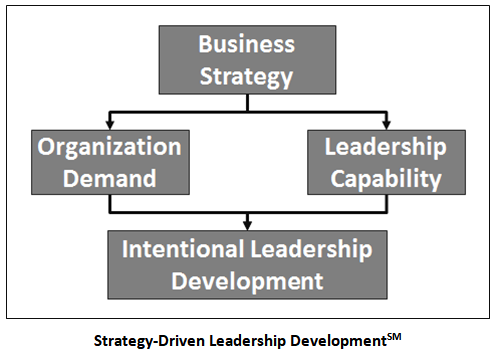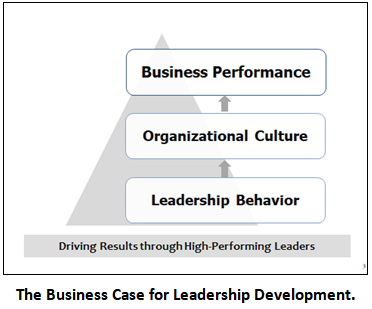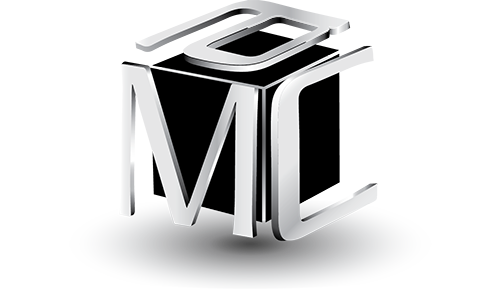STRATEGY-DRIVEN LEADERSHIP DEVELOPMENT: A NEW MODEL TO DRIVE BUSINESS RESULTS
Strategy-Driven Leadership Development:
A New Model to Drive Business Results
Michael Couch
President
Michael Couch and Associates Inc.
It’s estimated that U.S. companies spend over $14 billion annually on leadership development (Wentworth and Loew 2013, O’Leonard & Loew 2012). Match that number to the abundant and growing research that finds most leadership development to be ineffective and the conclusion is a phenomenal amount of waste.
- A 2015 study by the Brandon Hall Group found that 81% of organizations reported that they were not very effective at developing their leaders. Only 18% reported that their leaders were very effective at meeting key business goals (Loew 2015).
- In a survey conducted by the Ashbridge Business School in the UK, only 7% of senior leaders said that their organizations effectively develop global leaders (Gitsham, et al., 2009).
- A Corporate Leadership Council survey of 1500 managers in 53 organizations around the world found that 76% felt that their learning and development functions were ineffective in helping them achieve business targets (Mitchel and van Ark, 2017).
- A 2017 survey by McKinsey found that only 11 percent of 500 global executives felt that their leadership development efforts achieved desired results (Feser, et al., 2017).
- In the 2017 CEO Challenge study conducted by the Conference Board, only 41 percent of global CEO’s felt that their leadership development efforts were of very high or high quality (Mitchel and van Ark, 2017).
- A 2011 survey of more than 14,000 line leaders and HR professionals found that only 38% of the leaders and 26% of HR felt that the quality of leadership was very good or excellent. When asked to consider the future, only 18% of HR and 32% of the leaders saw their pipeline of talent to be strong or very strong. (Boatman & Wellins 2011)
As disheartening as these research finding are, the situation does not need to be that dire. Properly designed and executed leadership development can make a difference.
There is now an opportunity for a significant retooling of leadership development, particularly in the ability to build the leaders needed for today’s unique business environment. And the timing couldn’t be better. The U.S. and Europe, in particular, are facing a “silver tsunami” of aging leaders ready to retire . . . and a smaller supply of talent ready to replace them. It is time for a complete make-over of the approach used to create the leaders needed in today’s volatile, uncertain, complex, and ambiguous business world. The new model is called Strategy-Driven Leadership DevelopmentSM (SDLD).
Strategy-Driven Leadership Development is an evidence-based, deliberate, and systematic effort that involves the following:
- Reviewing and clarifying the business strategy with all stakeholders involved in leadership development
- Describing the demand that business strategy places on organization’s leaders by translating the strategy into a few mission-critical leadership competencies
- Identifying and assessing the capacity of leaders at all levels to meet the demands through robust talent assessments
- Accelerating the development of mission-critical competencies through Intentional Leadership Development
No talent initiative can be effective unless it is built from a specific strategic foundation. And no two organizations have exactly the same strategy. As a result, the demands that strategy places on an organization in terms of needed capabilities or leadership competencies are not the same. Nor do different organizations start with the same existing set of talent; each organization’s current capability is different.

Strategy-Driven Leadership DevelopmentSM is a focused process that drives business results. The expected impact is defined up front. It begins with the end in mind and builds the foundation to answer the questions, “Why are we doing this?” and “Is it worth it?”
One of the most significant components of the SDLD model is reflected in the approach to Intentional Leadership Development. In short, Intentional Leadership Development can be described as:
- Establishing a strong personal and business case for development,
- Identifying and targeting the critical few leadership competencies which will have the greatest payoff for the individual learner and the organization,
- Creating an Intentional Development Plan that is built into daily work and involves regular feedback, reflection and progress tracking, and,
- Assuring that new competencies are effectively applied in real-life situations so that the developmental experiences are positive (additive) to a career, setting the stage for further development.
Aligning talent strategy to business strategy as highlighted in the SDLD model has been shown to have clear positive benefits. A nationwide study of over 1,000 publicly-traded firms found a positive impact of strategic talent practices on important employee outcomes and also on corporate financial performance. The study determined that a one-standard-deviation increase in high performance workplace practices was associated with a 7.05 percent decrease in turnover and $27,044 more in sales per employee. In addition, that small change in key practices was linked to $18,641 more in market value and $3,814 more in profits per employee (Huselid, 1995).
“Buying off-the-shelf packages and installing them without regard to VBC’s <vision, brand, culture> and go-to-market strategies is frankly a waste of time and money” (Fitz-Enz and Mattox, 2014 p.22)
Likewise, deliberately and systematically developing leaders has a payoff. The biggest payoff (and the strongest business case) for leadership development is the effect that leaders’ behaviors have on organizational culture. Research confirms that organizational culture is a driver of organization performance (Denison and Hallagan2017; Boyce, et al., 2015), including revenue growth, market share, returns, quality, productivity, customer satisfaction and innovation. The eminent culture scholar, Edgar Schein, described culture as “one of the most powerful and stable forces operating in organizations.” Culture comes first; performance follows. But what drives culture? The single biggest factor is the behavior of an organization’s leaders (Sarros et al., 2002).

With the advent of talent analytics, it has become easier to analyze the link between the skills of an organization’s leaders and key business outcomes. For example:
- Research conducted by the Centre for Economic Performance and the McKinsey Company found that, even accounting for economic factors, well-managed companies significantly outperformed poorly- managed firms in terms of productivity, return on capital employed (profitability), and sales growth (Bloom et al, 2005)
- Studies that analyzed the impact of top leader self-awareness consistently found a strong positive correlation between high self-awareness and key business measures such as employee satisfaction, net profit, return on investment, and stock performance (Okpara and Edwin, 2015, Wexley, et al 2017, Zes and Landis, 2013)
- A longitudinal study by Russel (2001) found it was possible to predict the short- and long-term performance of executives from competency-based assessments. It also estimated that using a selection procedure based on targeted competencies generated an additional $3 million in annual profit per executive selected.
- A study of 60 Fortune 1000 firms showed that ability to lead effectively explained almost twice as much of variance in the firms’ profits as did economic factors (Hansen and Wernerfelt, 1989)
- A study of 72 US Army light infantry platoons found that certain aspects of platoon leaders’ and sergeants’ behavior were predictive of platoon performance (Bass et al, 2003)
- A large financial services firm mined their extensive multi-rater (360) competency assessments to answer the questions, “Which competencies drive revenue and which drive retention of high-performers?” They uncovered a key set of competencies that differentiated between low-performing and top-performing field managers. The result: they estimated that they could reduce annual turnover costs about $580,000 per field manager and boost sales commissions by more than $460,000 per manager.(Huselid, 2013)
- Organizations whose leadership development is at a strategic level (exemplary senior management support, senior leaders view leadership development as an integral part of the overall talent management system, development content aligns with strategic priorities, use of a broad learning format) exhibited 20x greater employee retention, 12x business growth and 8x better bench strength, among other impacts, than organizations with inconsistent leadership development (O’Leonard and Loew 2012)
- As little as a “10% change in leadership bench strength leads to a 0.5% year-over year change in revenue and profit”(CEB 2014)
Developing the competencies of your organization’s leaders can make a difference in an organization’s overall performance. However, positive change doesn’t come from any and all competencies, and it may not come from developing any and all leaders. For competency development to be effective, strategy must come first. Strategy begets strategy-critical competencies and roles which begets targeted development strategies which begets Intentional Leadership Development.
References
Bloom, N., Dorgan, S., Dowdy, J., Van Reneen, J., & Rippin, T. (2005). Management practices across firms and nations. London: Centre for Economic Performance and McKinsey and Company.
Boatman, J. & Wellins, R. S. (2011). Global leadership forecast. Pittsburgh, PA: Development Dimensions International.
CEB (2013) Breakthrough Performance in the New Work Environment. Executive Guidance for 2013. Retrieved from https://www.cebglobal.com/content/dam/cebglobal/us/EN/top-insights/executive-guidance/pdfs/eg2013ann-breakthrough-performance-in-the-new-work-environment.pdf
Feser, C., Nielson, N. & Rennie, M. (2017, August). What’s missing in leadership development. McKinsey Quarterly. Seattle, WA: McKinsey & Comp..
Fitz-Enz, J. & Mattox, J. (2014). Predictive analytics for human resources. Hoboken, NJ: Wiley.
Gitsham, M. (2009) Developing the global leader of tomorrow. Ashridge Business School. Ashbridge, UK: Ashbridge Business School
Hansen, G. S., & Wernerfelt, B. (1989). Determinants of firm performance: The relative importance of economic and organizational factors. Strategic Management Journal, 10(September – October), 399-411.
Huselid, M., 1995. The impact of human resource management practices on turnover, productivity, and corporate financial performance. The Academy of Management Journal, 38(3) 635-872.
Loew, L. (2015). State of leadership development 2015: the time to act is now. Brandon Hall Group. Retrieved from http://www.ddiworld.com/DDI/media/trend-research/state-of-leadership-development_tr_brandon-hall.pdf
Mitchel, C., Ray, R. L., and van Ark, B. The conference board CEO challenge 2017: Leading through risk, disruption and transformation. New York. NY: The Conference Board.
Okpara, A and Edwin, A. (2015). Self-awareness and organizational performance in the Nigerian banking sector. European Journal of Research and Reflection in Management Science. 3(1).
O’Leonard, K., & Loew, L. (2012). Leadership development factbook 2012: Benchmarks and trends in U.S. leadership development. Oakland, CA: Bersin & Associates.
Russell, C. J. (2001). A longitudinal study of top-level executive performance. Journal of Applied Psychology, 86(4), 560-573.
Sarros, J., Gray, J. Densten, and Iain L. (2002). Leadership and its impact on organizational culture. International Journal of Business Studies. 10(2), 1-25.
Wentworth, D. and Loew, L. (2013). Leadership: the state of development programs. BrandonHall Group. Retrieved from http://www.skillsoft.com/assets/research/research_bhg_leadership_development_programs.pdf
Wexley, K, Greenawalt, J, Alexander, A. and Couch, M. (1980) Attitudinal Congruence and similarity as related to interpersonal evaluations in manager-subordinate dyads. Academy of Management Journal, 23(2), 320-330.
Zes, D., and Landis, D. (2013) A better return on self-awareness (Report). Los Angeles, CA: Korn Ferry Institute

